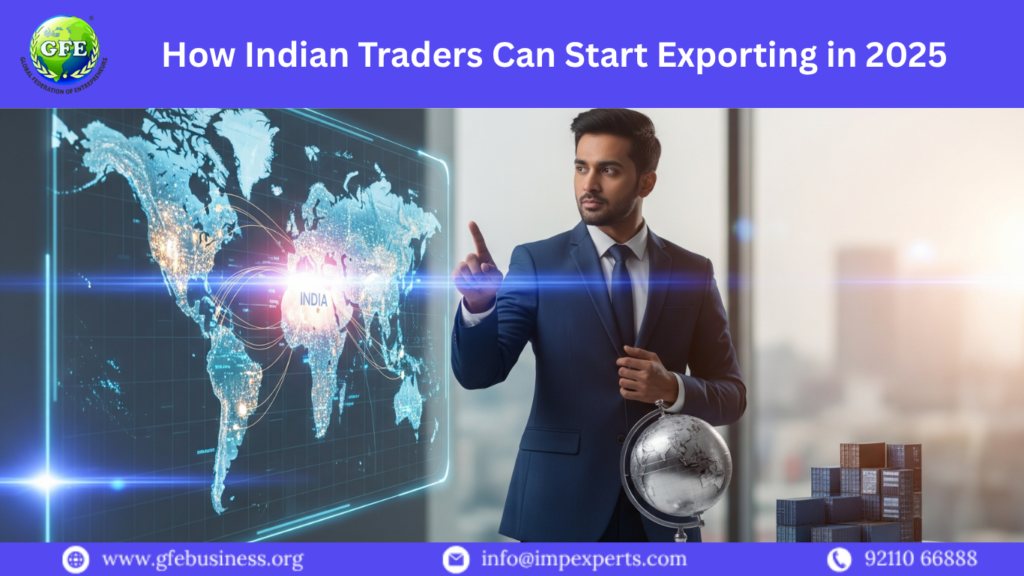India has more than 6 crore small traders — from textile wholesalers to FMCG distributors. But in 2025, it’s no longer enough to sell locally. With rising global demand for Indian products and simplified digital tools, traders across India are becoming exporters — and building scalable, profitable businesses.
At GFE Business, we help Indian traders transform their existing operations into global ventures through structured export training, buyer support, and startup guidance.
Why 2025 Is the Right Year to Start Exporting
Global buyers are sourcing directly from Indian MSMEs
Platforms like WhatsApp, LinkedIn & B2B portals make trade digital
Freight and customs processes are more transparent than ever
Government is actively supporting exporters through subsidies and compliance help
If you’re a trader in India today, this is your best chance to go international without opening new warehouses or stores.
Step-by-Step Guide: How Traders Can Start Exporting
1. Register Your Business for Exports
Start with legal setup:
Get your IEC (Import Export Code) from DGFT
Register your business for GST
Open a current account with AD code linked
Apply for FSSAI license if dealing with food/agro items
Once registered, your local trading firm is legally ready to export.
2. Select Your Export Product
As a trader, choose items that:
Already have demand in your stock (e.g. garments, machinery, plastics)
Have stable shelf life & packaging feasibility
Appear on the Top Exported Goods list from India (APEDA, DGFT, FIEO)
Pro Tip: Even if you trade domestically in 5 products, start with just 1 export-ready item.
3. Understand Export Compliance & Documentation
This is where most traders get confused. You’ll need:
Export Invoice & Packing List
Shipping Bill & Bill of Lading
FIRC (Foreign Inward Remittance Certificate)
Certificate of Origin (COO)
HS Code knowledge for correct customs filing
GFE Business offers ready-made templates and guidance so you don’t have to figure this alone.
4. Find Buyers the Smart Way
Use digital methods to reach global buyers:
B2B sites: Alibaba, TradeIndia, Global Sources
LinkedIn: Search by importer titles, regions
WhatsApp & email outreach with a product catalog
Attend virtual B2B expos and India Pavilion trade shows
Remember: Most first-time exporters get clients from just 1 buyer who repeats. You don’t need 100 leads — just one serious one.
5. Start Small, Ship Safe
You don’t need a huge container to begin. You can start with:
Small air shipments (25–100 kg samples)
LCL (Less than Container Load) sea shipping
Domestic courier pickup + international courier tie-ups
Just make sure labels, customs forms, and packaging follow buyer specs.
How GFE Helps Indian Traders Export
Whether you’re a textile trader in Surat, a wholesaler in Delhi, or a dry goods merchant in Rajkot — GFE Business gives you:
Practical training in documentation, costing & compliance
Buyer search methods using free + paid tools
Guidance on shipping, HS Codes, export-ready catalog
Lifetime mentorship and business setup support
Templates, follow-up scripts, and pricing formulas
We turn local traders into global exporters — without confusion.
Final Words
India’s traders already have the product, supply chain, and contacts — now it’s time to go global. In 2025, becoming an exporter is about learning the system and applying it correctly — not about investing huge capital.
Ready to take your trading business global in 2025?
Visit www.gfebusiness.org and connect with real trade opportunities.








